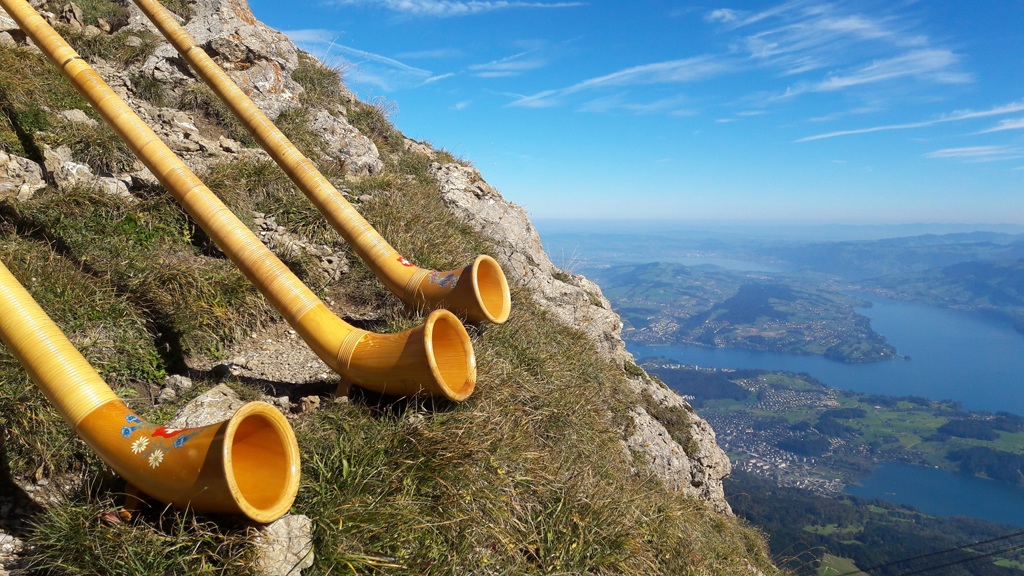The origins of the alphorn are lost in the mists of time, but we know both from fragmentary physical evidence, iconography and resonances of oral tradition written down from the 17th century onward that they have been played in the central mountainous region of Europe for a very long time. It is reasonable to suggest that they may be “living fossils,” the last surviving echo of an ancient culture of giant horns. The Canegrate culture (13th century BC) may represent the first migratory wave of the proto-Celtic population from the northwest part of the Alps that, through the Alpine passes, penetrated and settled in the western Po valley between Lake Maggiore and Lake Como, and Cisalpine Gaul. This was a huge region corresponding to what is now most of northern Italy. inhabited by Celts during the 4th and 3rd centuries BC. It is possible that the alphorn derived from the Etruscan lituus, because of their resemblance in shape, and because of the word liti, meaning Alphorn in the dialect of Obwalden is so similar. In support of this theory, we know that the Etruscans were bronze and Iron Age masters of metalwork and metal instrument making, and that there was active trading and cultural contact between the Etruscans and Celts prior to the domination of Rome. However, it must be noted that also liti may have been borrowed from 16th-18th century writings in Latin, where the word lituus could describe various wind instruments, such as the horn, the crumhorn, or the cornett.
Traditionally the Alphorn was made in one single piece, or two parts at most, of the wood of a red pine tree. The most rustic versions of the alphorn today are found in Transylvania. They are often of an individual and unusual form, which is governed by the shape of the tree branches selected to make them. Modern Alphorns are more frequently made from the wood of a spruce or fir tree, and use a wooden cup shaped mouthpiece. They are always perfectly conical and thus produce a natural harmonic series, constructed to many different base pitches, the most common being F, G, Ab, D & C.
The instrument owned by Carnyx & Co. is bass F, four metres long, made by Albrecht Pregitzer.


